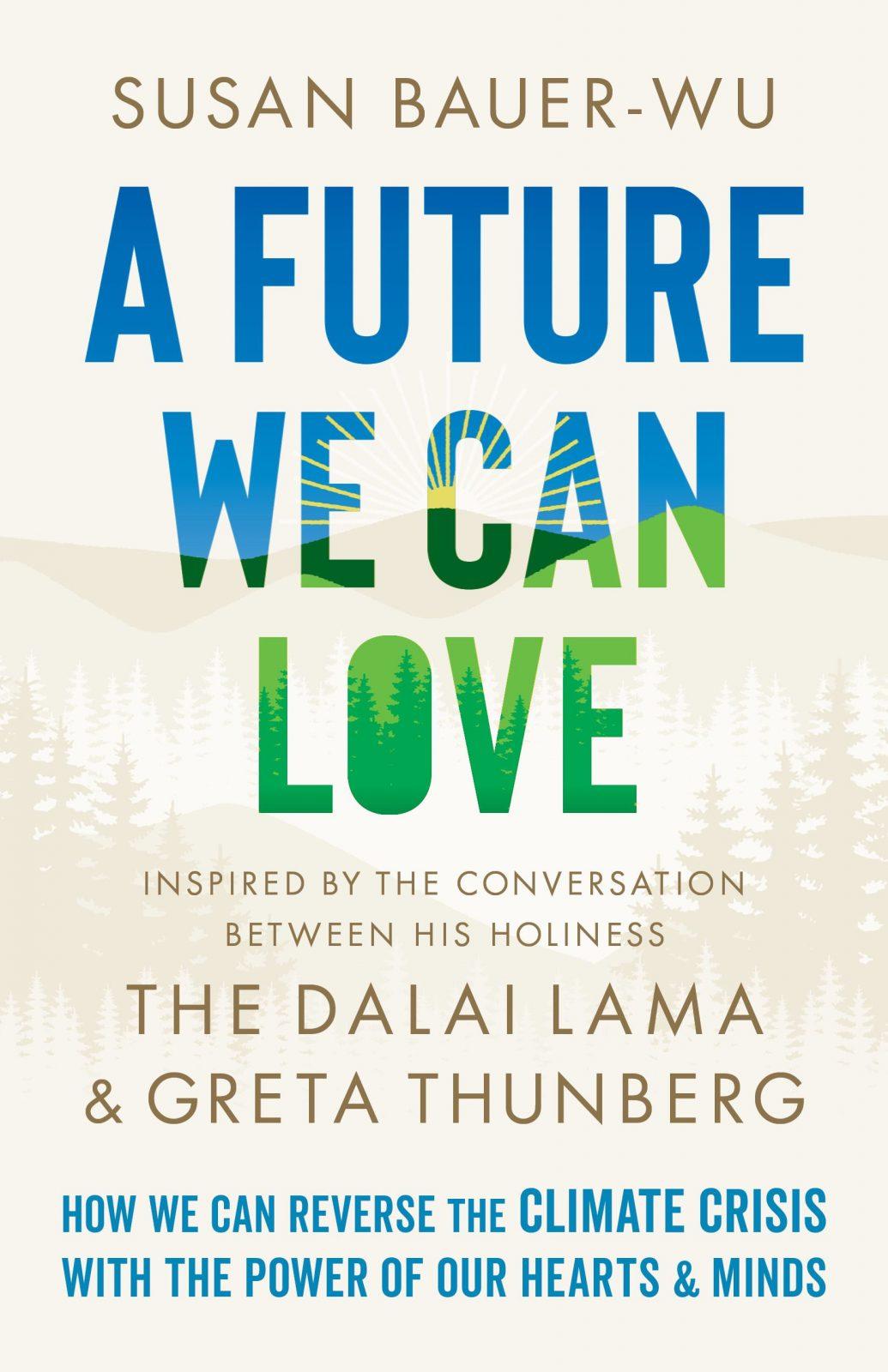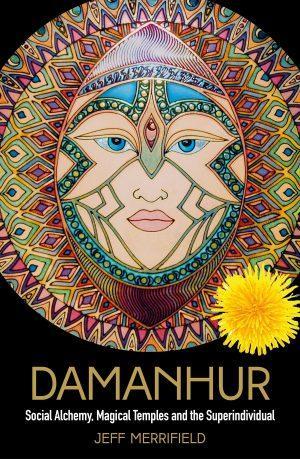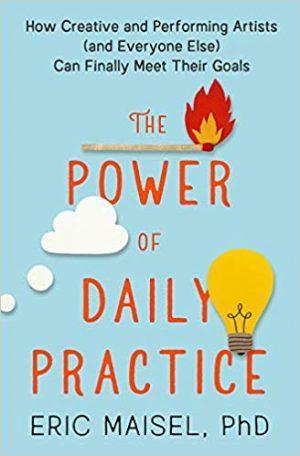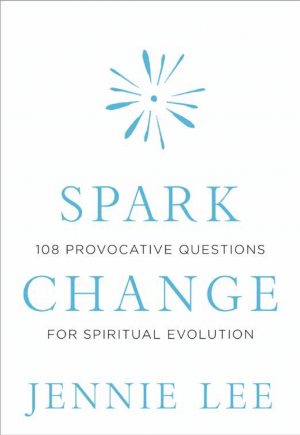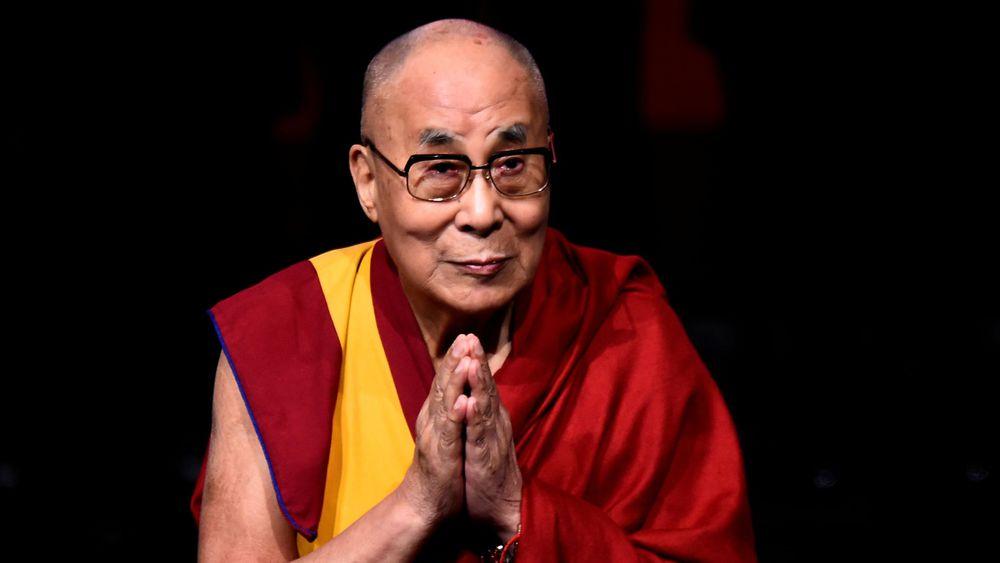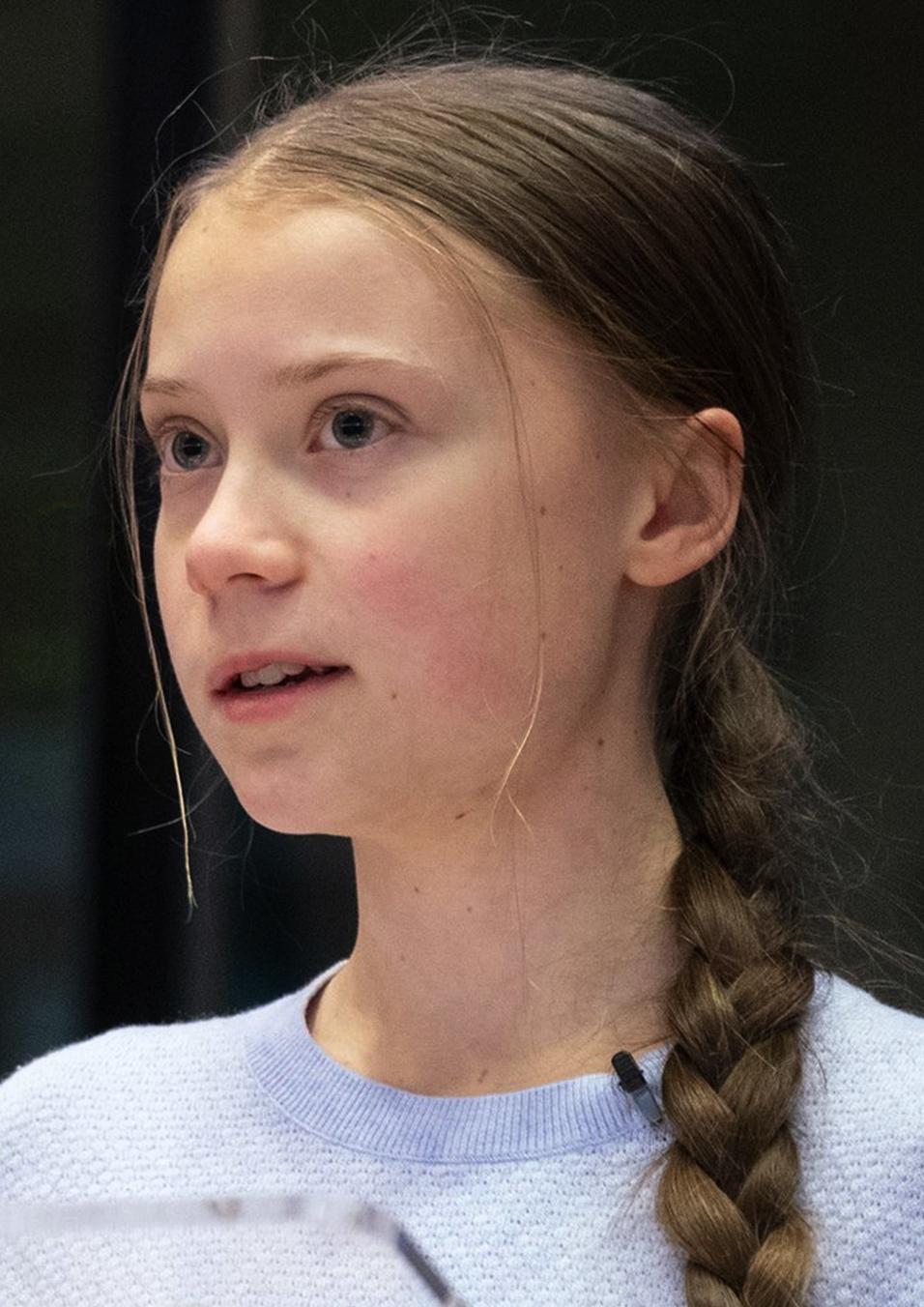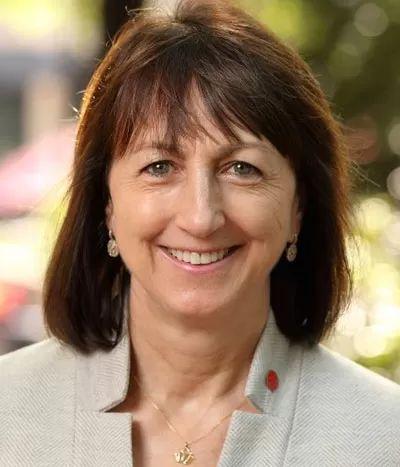A Future We Can Love
0,00 €
Dalai Lama (14th - Tenzin Gyatso)
| Language of origin | |
|---|---|
| Publication date | |
| Pages | |
| Rights Sold |
Shambhala
How We Can Reverse the Climate Crisis with the Power of Our Hearts and Minds
The planet is heating up. Forests dry up and burn down. CO2 gets into the atmosphere. The planet is heating up even more. The forests are getting even drier… Or: The planet is heating up. Permafrost thaws. CO2 gets into the atmosphere. The planet is heating up even more. Even more permafrost is thawing. These are two of the climate feedback loops that can make our planet uninhabitable. Greta Thunberg and the Dalai Lama show how these loops work and how they can be reversed. That is possible, we just have to make an effort for it. The scientific basis is provided by William Moomaw, one of the main authors of the Nobel Prize-winning Intergovernmental Panel on Climate Change of the United Nations and the World Meteorological Organization, and the prominent Arctic-Researcher Susan Natali.
The climate crisis seems to be at the front of everyone’s mind these days. Yet despite all the evidence, much of the world continues to be mired in inaction, with a hefty dose of both dread and denial. Meanwhile our cities keep flooding, our forests are ablaze, people are dying from heat, and other weather events that no longer feel like “natural disasters”. This ambitious book seeks to cut the gordian knot of what prevents us from moving for-ward into a sustainable world that we all can embrace. Decades ago, when the Dalai Lama began speaking of the importance of environmental consciousness he drew attention to a distinct feature of the problem that makes it difficult for us humans to grasp the looming threat. Unlike war, where the impact is obvious and immediate, the effects of ongoing environmental degradation remain hidden to everyday human perception. His warning was that if we wait until the effects become obvious, it might be too late.
This book distills the intelligence and skillfulness that allows us to cut through the obstacles, by pointing at the solution in the nexus of science and spirituality, and offering a path forward. When His Holiness the Dalai Lama and Greta Thunberg met to discuss climate change this year, the very fact that they were coming at this together gave us a starting point, to think about climate change differently. The event, a live streamed conversation hosted by the Mind & Life Institute in January 2021, and watched by over 1M people, had a sharp focus: the science of climate feedback loops, identifying the obstacles to reversing them, and charting the path ahead. There were scientists there, too, to explain the science to these two famously, fearlessly curious people, and to us. What was clear then and now is that the solution to the crisis we face is not wholly technological or scientific, but must be found within our minds, and remains elusive because of the human propensity to hide things from ourselves. It has always been our aim at Mind & Life, an organization His Holiness co-founded over three decades ago, to have the most brilliant minds in the world explore and explain the challenges and mysteries of human behavior and the interaction of people and the world around them. All this inquiry has prepared us for this crucial moment when the future of our lives on this planet depends upon coming to a decision that we must all make at once – to focus our attention and our actions on reversing a slide into utter environmental devastation. This is a monumental task on its own, but complicated further by the obstacles within ourselves. In this book we will lay out the science for you in a fresh way, by explaining “feedback loops” and connecting them with the Buddhist concepts of interdependence and compassion.
We will address the most perplexing aspect of our problem – how do we muster the political and personal will to address what is happening before our eyes? There is much that is terribly wrong in the world right now, and sad to say, the blame for most of our problems can be laid at our own hu-man feet. Yet while humans create epic messes, we also have a vast, even boundless capacity for intelligence, creativity and compassion. We tend to think of spiritual advice as “soft”. It’s useful for difficult times, for easing our stress or improving our outlook. What we miss in that view is that spiritual solutions are often very practical, and point at something at the root of our problems. When the Dalai Lama advocates for the need to take the principle of interdependence seriously, it is not just so that we can appreciate the complex causation of how human behavior impacts the natural environment, but so we can deal with it on a practical level. In a Venn diagram of the science and spirituality of climate change, the intersection of the two would be called, in scientific terminology, “feedback loops” and in Buddhist terminology “interdependence”. This book will explain what we mean by each of these terms so that we can free ourselves from two problematic and mistaken ways of thinking which prevent us from actively engaging the situation: that someone else, other than us, will save us at an unspecified time in the future, or that there’s no hope.
The first the basic concept of interdependence: everything is connected. This isn’t just a philosophical construct, this is the nature of our world. While a person, or an object or an event can seem to exist independently, it does not. Everything is interwoven, dependent on something else. No matter how long you ponder, you will never find anything or anyone that is not a combination of causes, conditions, and/or elements. The world is an endless web of these things, all bumping up against one another and changing things, for better or worse, or something in between. This is true whether we are turning on the stove to cook a pot of soup, shooting a rocket into space or offering help to a person in need. You’ll learn much more about these climate feedback loops in the book. Our fossil fuel burning and factory farming and more are accelerating a cycle of warming that causes things to happen that further warm the earth. The loop is spinning in a negative direction for the future of humans, and it is accelerating. The good news is that, just as the law of interdependence and feedback loops can spiral in a negative direction, so can they move in a positive direction. The insight that the arrow in the cycle can point in the opposite direction, from damage to healing, holds a powerful promise and hope for the future of our planet as well as all the species that share it as our only home. But the time is now!
Earth is our most powerful ally, a “smart” partner that will always meet us more than halfway. If we feed the planet massive amounts of greenhouse gases, the warming that results creates further warming until we hit a tipping point. But if we take steps to cool the earth, like protecting and regrowing forests, the potential is to recapture a cooling trend, which in turn creates a better atmosphere for multiple systems that aid in cooling. We can grow Earth’s capacity for cooling, by protecting the natural lands that are already “sinking” carbon, protecting Indigenous lands that have the most complex biodiversity and can aid the rest of the earth in reestablishing balance, and growing new forest where it has been ravaged by logging, draught, and fire. The questions from climate activists like Greta Thunberg might best be articulated as “what’s wrong with us?” In other words, what’s preventing us from acknowledging the potential for turning this around, and acting accordingly? It is in this unique intersection of science and spirituality wherein we find the solution to these questions, which frees us to take action, illuminates the reality that our actions matter, and charts a path for what we can do individually and collectively. As the Dalai Lama says, the biggest challenge we face is, fundamentally, “a mental problem”.
We have the technology and the scientific understanding to combat this crisis, and in this book we will equip you with the knowledge to be smart, educated and focused in your conversations and your activity around climate solutions. Wherever you are on the spectrum, from skepticism to outright panic, there is something for you in this book to lead you toward calm, assured, courageous action, and to be as big a part of the solution as we believe you want to be. There have always been people in our world who are willing to take on seemingly impossible odds, risking or sacrificing their own wellbeing for the benefit of others. They see suffering, in-justice, or danger and run toward it in order to sound an alarm, or ignite structural changes, or pull others from the jaws of danger. These are our heroes, our saints, our leaders who have the integrity and courage to take on the status quo and call out those who would do us harm. In the Buddhist tradition, these people are called “bodhisattvas” – people who see the true nature of interconnectivity, and who are willing to do whatever it takes to relieve every single being, no matter how small or large, of their suffering. It is said they never give up on anyone. It is also said that we are all innately bodhisattvas, that we each have this “gene” that sparks our most enlightened actions. It is this that allows us to feel grief when we see a parent’s pain upon losing a child, whether we know them personally or not. It is this that makes us jump into a raging river to save someone who is drowning. To meet the times that we are in today, to avoid the displacement, suffering, and death, or extinction, of millions and leave our planet habitable for our children, we must ignite that spark in each of us – with inspiration, education, and connection. Herein lies the power of the human heart and mind. There is a path forward, even given the dire predictions of our respected climate scientists, and the frightening weather events that we experience.
The first steps were lit for us by a conversation between two of those whose inner light warms millions around them and brightens the world, His Holiness the Dalai Lama and environmental activist Greta Thunberg. Their conversation included two of our most respected climate scientists, also modern day heroes, who have been sounding the alarm for decades and as a result have been silenced, even threatened, for their unrelenting truth-telling. The event that brought them together offered the most cutting edge understanding of what is driving the climate emergency, and a critical education about the role of feedback loops in accelerating global warming, but also the power of using the science of feed-back loops to potentially reverse and cool the planet, which is exactly what we heard in the re-cent U.N. report – the situation is dire and there is a window for us to do something. These feed-back loops are why we need to start living now for a future we can love, not later when it will be too late.
Encouraged by the enormous response to this conversation, Mind & Life embarked on a robust exploration of the challenges and potential solutions to climate change from both a scientific and spiritual perspective, mingling the two. It is this interdisciplinary approach that we see the magic of what could be our future. In this book, you’ll meet activists who are driving change that can reverse the direction we are headed, individuals and communities who are enacting new policies and systems that are literally cooling and protecting their local environment in real time. And you will see how you can become a part of it all. No one person, no two people, no group, have the solution. As those two people agreed that day (or night depending on your time zone), however, together all seven and a half billion of us do. The answer to this crisis is actually in the connection between people – it exists in our vast, brilliant, interconnected minds.
It is not new that His Holiness and Greta Thunberg are interested in the causes of global warming and the future of Earth, but just as the answer to a complex riddle is often “in between the lines,” we may be surprised to find in conversation with them and with each other the knowledge, capacity, will, and action to start living now for a future we can love instead of fear. Our goal with this book is ambitious, even audacious. Inspired by the leadership of these earth champions, we aim to change the conversation around the climate crisis completely, and in so doing, provide the causes and conditions to change course. In order to do so, we are providing you with the best of the best – of social, environmental, and cognitive science, alongside the power of ancient wisdom traditions – to awaken the hero within you. The potential at this time, on this Earth that is our home, is enormous – potential for a world so beautiful we can barely imagine it at this time. If we rise to this occasion, we will realize a world filled with kindness, friendliness, beauty, abundance. As the eco-warrior Dekila Chungpala (whom you will hear from in this book) says “The time for sitting on the sidelines is over.”
HOW THIS BOOK WORKS: AN EXPANDED OUTLINE Introduction: Earth is our partner – everything we do affects the balance of the planet. This introduction will be in two parts – first, we’ll establish what is different about this book, and why reading it is the first step in joining a global movement. Secondly, we’ll establish the causes and conditions that initiated the dialogue between His Holiness the Dalai Lama and Greta Thunberg. This is presented in an introductory note by Diana Chapman Walsh and Barry Hershey, the producer of five short films, Climate Emergency: Feedback Loops, which provided the scientific underpinnings of the event. In the book, we will use a blend of science and spirituality (with the help of some remarkable people) to explore the four essential resources that can create the causes and conditions for interrupting and reversing the destructive loops that threaten us.
Part 1: KNOWLEDGE – A Critical Understanding Feedback Loops and the Causes and Conditions of the Climate Emergency To address any complex problem, it helps to understand it; so, we’ll start by addressing the root and nature of the climate emergency, from a scientific and societal perspective. We will explain the science of feedback loops, or why we are already at the point where the earth itself is warming the Earth. This is the science that keeps our experts up at night, yet most people don’t know about it.. In Part 1 of the book, we’ll bring the reader up to speed about the most current and salient science, which was presented at the event in January and will be updated and fully current for this book. Understanding this science, having this KNOWLEDGE, is critical to effectively address the crisis: critical to setting goals for reducing emissions that are ambitious enough to save us, for example; critical to seeing that we are literally all in this together; and critical to realizing that we must act now. Next, we will show the reader how a shift from thinking of Earth as something to be “used” to realizing we are part of the earth, changes every conversation around climate. There are some hard truths about what drives humanity’s current relationship to the Earth, and how we have arrived at such a critical moment in time. These are the societal, cultural and economic feedback loops at the root of the most persistent, devastating aspects of the world we live in today. Also, having a working knowledge of feedback loops is enormously helpful in your conversations with people who don’t understand the science. It is a powerful counterbalance to the belief that this heating trend is a normal cycle, which is a popular theory for those who are uncomfortable with taking ownership of the problem. And without ownership of the problem, there is no ownership of the solution. Thus, this knowledge is truly critical. You may already be well informed, and suitably alarmed by the science of climate change. Yet we all benefit from growing our understanding of the problems we face, and we trust that this part, which explains the science of feedback loops and tipping points in plain language with vivid examples, will give you a way to think about how – and why – we must change. We also hope it will give you talking points that will help in your communications with friends, family and others so we can all get on the same page, which is critical for the path forward. The Earth is a living, interconnected system, and that is the starting point. Once we truly understand that we are not separate from Earth, at any time, in any way – what we do to the earth, we do to our-selves, what we take from the earth, we take from ourselves – there is a shift in our understanding of the root of the problem, as well as the solution. This chapter follows the science foundation of His Holiness the Dalai Lama’s and Greta Thunberg’s conversation, with a group of climate scientists to explain the current science of climate change and the urgency of societal change.
THE SCIENCE: What are feedback loops and why must we care? The four most salient and powerful examples: Albedo, Permafrost, Atmosphere, and Forests. This chapter will explain each of these feedback loops in action, in the direction they’re currently going. There will be vivid examples for each loop, from the plight of the reindeer in Siberia to the devastation of the wild-fires of the Northwestern United States, so that the reader can see for themselves how “complex causality” is always at play. Other examples will show the reverse – such as the Clifton Urban Forest project, called the green lung in the center of Karachi, Pakistan. Hidden within the science of each feedback loop is a solution that involves working with the natural world, boosting the Earth’s ability to heal itself, which we can do when we understand the mechanism that is causing the problem. We tend to think that for every action there is a reaction, a kind of one-to-one formula. Yet the world is not made up of straight lines, but rather loops or circles. When we stop and examine, we realize that nothing happens in isolation, and that every action has infinite reactions. With negative feedback loops this is the definition of disaster, yet it is also the key to the solution.
THE SPIRIT: Many of us know that carbon emissions from the petrochemical industry and factory farming drive about 80% of the warming, but they didn’t just “happen”. Prior to the industrial revolution, communities around the world worked with nature to build and grow what was needed. To this day, indigenous lands hold 80% of the biodiversity on Earth. By looking at the societal feedback loops built by accumulating material goods and our relatively recent (in Earth years) obsession with coming out on top, we begin to understand the seeming intractability of our destructive relationship with the Earth. We all want to be happy, but are confused by what will make us so, thinking that a transaction will “get us” what we need. However, that approach to happiness ignores interconnectivity, and ultimately initiates a societal feedback loop – of taking, using, colonizing, competing. While transactions can work in business – I sell, you buy – it does not work in relationships – with people or with Nature.
WHAT DO WE CAN DO: The Buddhist path is marked by becoming aware of that which we often intuitively knew, something that could be right in front of our faces (or in our heads). As we become part of this global movement, at this beginning stage of our path, we simply become familiar with the idea of feedback loops and how they work, and start to look for them in our daily life. Feedback loops are everywhere. Everything we do has multiple outcomes, the so-called ripple effect. If we shout at someone, they might shout back, or they might store up their hurt and anger, and go home and shout at their child. Similarly, when we offer kindness to someone who is struggling, we may ease their burden just enough to allow them to pass along that kindness to another. And so on and in ever more complex and nuanced ways, we actually build the world around us. If we contemplate the multiple, even countless, consequences of our many actions we begin to see how infinitely connected we all are, and how each small act will have consequences far beyond the scope of our awareness. By doing this, we are beginning to work with our minds, to understand the impact of our actions at a heart level. The magic in this is that by bringing intentionality to even our smallest actions (what is often called mindfulness in action) we start to change those endless ripples.
Part 2: CAPACITY – Creating Positive Feedback Loops by Partnering With the Earth “We’re going to need a bigger boat” In Part 2, we will turn to the good news, and see how our CAPACITY for healing the earth is met tenfold by the Earth itself, since it is built into the very same systems of healing and cooling that produces the feedback loops we learned about in Part 1. If we can interrupt and reverse these loops, the Earth itself will increase our capacity for meeting this crisis exponentially. The Earth is our “secret weapon” in meeting this challenge. Our own capacity to use this weapon to set the climate on a different course depends first on the weapon not being a secret, second on realizing our immense bodhisattva capacity, and, finally, on understanding, in our minds and in our hearts, that we are not living on Earth, we are Earth and cannot be separated from it. Thus, understanding our capacity for change requires a significant shift in consciousness that is the ultimate goal of Part 2. We will offer practices and thought experiments to help the reader create more positive feedback loops in their immediate world, which is the key to growing capacity at every level. We know that the idea of stopping emissions, ending our destructive relationship with the Earth seems impossible; and we know, from behavior science, that people don’t try what they don’t think they can do. “We have to make a different reality through changing what’s in our mindset. That it’s impossible is an attitude, not a fact.” —Christiana Figueres, former Executive Secretary, UN Framework Convention on Climate Change; Shifting our perspective from “impossible” to “difficult but possible” is the work of …
EARTH’S CAPACITY: The Earth is our most powerful ally, a “smart” partner that will al-ways meet us more than halfway. As we saw in Part 1, If we feed the planet massive amounts of greenhouse gases, the warming that results creates further warming until we hit a tipping point. But if we take steps to cool the earth, like protecting and regrowing forests, the potential is to recapture a cooling trend, which in turn creates a better atmosphere for multiple systems that aid in cooling. We can grow the Earth’s capacity for cooling, by protecting the natural lands that are already “sinking” carbon, protecting Indigenous lands that have the most complex biodiversity and can aid the rest of the Earth in reestablishing balance, and growing new forest where it has been ravaged by logging, draught, and fire. As New Orleans discovered in the wake of its most recent hurricane disaster, while the levies held, which was critical, the flooding was made worse by the absence of the natural swamps in the surrounding areas, which once acted as giant steam pumps to remove excess water before floods destroyed the city. We can work with the Earth’s natural remedies – if we understand what the Earth needs from us, the Earth knows what to do to take care of us. It’s not just a nice thought – it’s science.
HUMAN CAPACITY: We can grow our own capacity to be a bodhisattva and play a bigger role in reversing the current feedback loops in society and the environment. There are prototypes – we have to learn them. This chapter will consider for example indigenous wisdom about caring for the earth, and why we must build this caring into our culture. We will meet Dekila Chungyalpa, a conservationist and social activist who grew up in a small indigenous community in rural northeastern India before she came to study in America, where she now works with faith leaders and culture keepers to help people disconnected from nature and from each other to understand what we have been missing and reconnect for the sake of inner, community, and planetary resilience. We will see that our capacity for any one of these kinds of resilience depends on the other two. We will meet Roshi Joan Halifax, a Zen Buddhist teacher with an ancient recipe for the bodhisattva attitude of strength, wisdom, and compassion that we will need to change the world.
Part 3: WILL – Practicing Like Our Home Is On Fire (Because It Is) In Part 3, we aim to see what goes into the personal, political and societal WILL to put a stake in the ground on behalf of the environment. Saving “our only home,” as His Holiness has referred to this planet, makes intuitive sense. You would think survival would be our top priority. So what forces have undercut and even perverted our will to address the challenge thus far, and how do we change? Every reader of this book plays a role in the environmental movement, negative or positive, since we don’t just live in this environment; we are inseparable from it. We’ll look at what has worked to flip the switch for mass behavioral change in other arenas, and invite the reader to identify obstacles in themselves and in their immediate world. The book will give ad-vice on how to begin to dismantle those obstacles, with advice on how to flip your own switch when your inclination would be to put off change until tomorrow, and how to build coalitions, because by building a network of people pulling in the same direction you will fortify your own will to make change. Greta Thunberg is rightly and famously angry about what humans have done to the planet, and especially angry about our apathy in the several decades that we, thanks to climate science, have known better. His Holiness is famously happy, yet has spoken often on moral outrage and how it can initiate principled action. Compassion can be wrathful and equanimity is not passivity. Some level of arousal is necessary. People misunderstand equanimity as a state of mind that is neutralized, but instead it is a mind that can contain everything – to see clearly. Equanimity as it is understood in Buddhist traditions is not a flattening out of emotions and awareness to “even things out,” rather an opening up. This part will show readers how to use the heartbreak and moral out-rage of environmental destruction and the climate emergency, along with the awe nature inspires in us, to break through our denial and paralysis and spark our will to change.
HOW THE LIGHT GETS IN: As any recovering alcoholic will tell you, denial is the most perplexing obstacle we face when it comes to change. Happiness is frequently just on the other side of giving up the one thing we think we can never live without. Wisdom and strategies for sub-stance problems have so much to tell us about this mechanism: call it bottoming out, or allowing your heart to break, and we begin to see how there is a gap from which wisdom and creativity and self-compassion can spring. In a sense, we “use” the shock of seeing the prognosis of what is to come if we do not change. That shock opens up space for us to transform. It is essential that we transform human hearts and minds. Our hearts have to break, but when they do, that’s when we can move forward in a new way. Simple wisdom practices to reconnect with ourselves and nature, and spark the “earth-protector” within, a fierceness that paradoxically, can arise from tenderness. Some good news – the gap isn’t only produced by a terrible shock. The role of awe is essential in our relationship with nature and helps fuel our will to action. We will present examples and re-sources, from researchers who study awe as well as Matthieu Ricard who takes breath-taking photos and speaks eloquently about awe (or as he says, wonderment).
Part 4: ACTION – Start Where You Are, but Start Today In Part 4, we offer the tools to chart a course for our global future. It starts with personal grounding and self-compassion. As Greta says, we need to find the maturity to say what needs to be said, and do what needs to be done. To do that, we also have to take care of ourselves, and others. We plan to inspire and guide every reader to take dramatic climate action, and will offer a path forward for each reader according to what inspires passion, and can make a difference. To further enrich the experience for the reader, experts in environmental science, behavioral change, and cognitive science, alongside powerful lessons from ancient wisdom traditions, are featured throughout so that anyone who reads this book can have the most current, accurate information to guide them in where to put their energy. The feedback loops of climate change are so enormous, we can feel small. Too small to do anything. But each one of us, individually and together, can be an interrupter. Every person reading this book comes to it with skills, passions and experience in so many different fields. When we say to “start where you are” we don’t mean to start small! Just as the climate crisis touches every area of our lives, your specific array of interests and capabilities has a place in this movement, and you can take stock of your situation, and get started immediately with the lowest hanging fruit. If you are interested in doing something you don’t know how to do, we can assure you that there are teachers for you in the field. Using the knowledge we gained from Part 1, and the skillfulness we gained in Parts 2 and 3, we each chart a path, and direct our actions so that they are effective and impactful. With the help of our leading teachers and environmental activists, here we offer more resources for making real change happen. We will use the guidance and inspiration of some Earth heroes – Vandana Shiva, Dekila Chungyalpa, Christiana Figueres and Matthieu Ricard, and of course, more from Greta Thunberg and His Holiness. No matter who you are, or where you live, or what your politics may be, there is work for you that can make a difference, and… wait for it… might just be fun and create connections and friends. You’ll be creating your own feedback loops, with skillful conversations and joyful activities that will be a cool breeze in the heat of our fractious world.
BEFRIEND YOURSELF: We encourage sitting meditation, but also moving meditation, contemplation, and compassion practices. There are countless resources to go further – we’ll offer a good selection. We’ll give you practices that will connect you to your own basic goodness. It will be your fuel for this journey. Look for nature everywhere, no matter where you live. The natural world is inviting your partnership each time you breathe in and look for evidence. Grow a garden on your windowsill or your back yard, boycott foods from factory farms, research renewable energy and how you can change aspects of your home, travel, personal care to use less fossil fuels. It may feel “small” but this is about making friends with yourself and feeling ease in your relationship with the world as much as it is about reducing your carbon footprint.
WORKING WITH OTHERS: Interconnection! You will find, once you begin, that so much work is already being done, and once you identify what moves you, there are countless others sharing your passion. Your impact will exponentially increase with every outreach. This book showed you the power of one conversation to start a movement -build on it with your own conversations. a) Family and friends – Encourage them to read this book! Help them to see that they are a part of this movement. b) Talk to your faith leaders – this is a most effective path to mass behavioral change. Talk to your ministers, your rabbis, your priests, your imams and your gurus. c) Schools, teachers, school boards – Demand that environmental science and climate change are priorities in the curriculum and amplify the voices of those who promote Social Emotional Learning for children. They will need this information more than anyone. d) Local, state, national, and global politics – Write letters, protest, vote, register voters, run for office. These are all forms of communication. Remember, change is sparked between us as well as within us, as we share knowledge, add to each other’s capacity, bolster each other’s will, and contribute to a communal well of compassion that we can all dip into when we need it to keep going.
BEFRIEND THE EARTH: Listen to what Earth is saying to us. Not only do indigenous lands hold 80% of the biodiversity on the planet, Indigenous wisdom, traditions and practices are the most powerful key to our problems. Scientists, engineers and activists agree on this – we can not engineer our way out of the threat of climate change – we must learn from ancient traditions and the earth itself and partner with the earth in order to sustain life on the planet. Period.
CONCLUSION: The Dalai Lama offers solutions from a deep wisdom tradition. In a time when globalization is our everyday reality, he challenges us to think differently about who we are, who our community includes, and what our very relationship to this planet is. In all of his work and conversations with scientists, politicians, and other world leaders and diplomats he encourages us to wake up and to look at the role of “mind” as it relates to our approach to the world, and to the climate crisis in particular. In her relatively short time on this planet, Greta Thunberg offers solutions with the blazing energy of youth and urgency of a person fighting for survival, because she is. In this meeting of two great minds and hearts we find not only reason to wake up and the inspiration to take action, but also a path forward into a future we can love. Maybe we began this journey overwhelmed and paralyzed, but now we truly know what it means when we say, “the time for standing on the sidelines is over.” The news is too often bad. The headlines are demoralizing and people are shut down. By creating space for change and lighting the way with knowledge, capacity, will, and strategies for action – space to see the reality we’re in but also what could be, we step onto the path of walking with the Earth, instead of on it and begin the hard yet joyous work of building a world for all of us to thrive.

